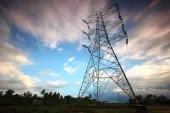Power shortage of 30 million kWh to hit China in summer due to consumer price controls
Normally, electricity prices should go up to reflect strong demand, but China experienced otherwise, says a report.
Electricity consumption in China surged 13.2% last year, faster than GDP growth of 10.3% despite ongoing monetary tightening. Demand for electricity has remained strong in 1Q11, growing by 12.7% YoY in 1Q11, again outpacing GDP growth (of 9.7%). In normal circumstances, electricity prices should go up to reflect strong demand, but this has not occurred in China. The textbook outcome is occurring instead: a widespread electricity shortage due to rigid electricity price controls at the consumer end.
The last power crisis (in 2004) was triggered by inadequate generation capacity. Since then, a surge of investment has boosted capacity by 2.5 times. The current power shortage is clearly not caused by capacity insufficiency. Instead, it is a peculiar case of self-restrained output by power companies to cut financial losses, which amounted to CNY18.3bn in 1Q11[1]. Coal accounted for more than 70% of thermal power plants' costs and prices of it have gone up almost 300% since 2004, and continued to surge by 8.3% in 1Q11. But electricity prices for both industrial and residential usage were only permitted to rise at a snail pace under stringent price controls. The objectives of such administrative measures are to suppress the surging input costs for producers and inflation expectations for consumers.
As a result, power companies have to scale back electricity generation. The problem has called for National Development Reform Commission (NDRC) to provide guidance for power rationing. Measures so far have already negatively impacted the normal operation of factories in 20 provinces and autonomous regions. Guangdong, Jiangsu and Zhejiang, which together accounted for 30.8% of industrial production[2] have also been affected. One township in Zhejiang, which produces about one-third of China's umbrellas, was badly hit. Umbrellas prices are now rising, illustrating how the effort to suppress inflation upstream is actually creating inflation downstream.
Looking ahead, the China Electricity Council warned that the country may face an electricity shortage of 30 million kWh in the summer, equivalent to three times the electricity consumption of Chongqing. Elsewhere, regional power distributor East China Grid Co Ltd estimated that Jiangsu will likely be the hardest hit this summer with a deficit of 11 million kWh, about 16% of what the province consumes in normal circumstances.








![Cross Domain [Manu + SBR + ABF + ABR + FMCG + HBR + ]](https://cmg-qa.s3.ap-southeast-1.amazonaws.com/s3fs-public/styles/exclusive_featured_article/public/2025-01/earth-3537401_1920_4.jpg.webp?itok=WaRpTJwE)
![Cross Domain [SBR + ABR]](https://cmg-qa.s3.ap-southeast-1.amazonaws.com/s3fs-public/styles/exclusive_featured_article/public/2025-01/pexels-jahoo-867092-2_1.jpg.webp?itok=o7MUL1oO)









 Advertise
Advertise


